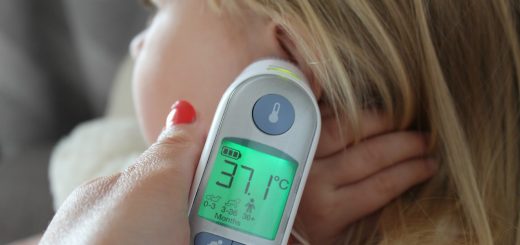Common Causes of Rashes in Babies and Children
A rash typically manifests itself as red, inflamed and often itchy skin. There may be Rashescrusty scales, pimples, hives or wheals. It is important for a parent to distinguish between the different categories of rashes–some may be quite benign, while others require immediate medical treatment. A simple diaper rash, for example, can be treated at home. However, a rash accompanied by a fever, swollen lymph nodes and other symptoms may indicate the presence of a more serious underlying illness.
Rashes occur for many reasons. For example, they accompany common childhood diseases such as measles, chicken pox and scarlet fever. Other common causes include:
Allergic Reactions
Rashes may occur more often in children who have a family history of sensitive skin and allergies. If you suspect an allergic reaction, try to identify and remove the allergen from the child’s environment. If you cannot identify the allergen, it may be necessary for your pediatrician or dermatologist to conduct a series of allergy tests.
Drug Reactions
Many medications, especially antibiotics, cause an allergic reation that produces rashes and possibly other symptoms. Drug allergies should always be reported to a doctor.
Eczema
Children with eczema are generally predisposed to having highly reactive skin, resulting in frequent itchy rashes that may be accompanied by oozing blisters or thick scaly patches. In children age four and older, the skin eruptions tend to be more scaly than oozy.
Contact Dermatitis
This condition is a type of eczema, which is triggered by direct contact with an allergen or irritating substance. Diaper rash is a common example of contact dermatitis.
Skin Infections
These often occur from scratching dry and sensitive skin. Impetigo, a highly contagious bacterial skin infection, characterized by blisters and red, oozing sores, often results from a preexisting skin condition, such as diaper rash. Ringworm (tinea corporis) is also a contagious skin rash caused by a fungus. It derives its name from its roundish, red, crusty eruptions. Scabies is also a highly contagious condition that is caused by tiny mites that burrow into the skin, producing an itchy red rash.
Intertrigo
This rash appears in skin folds, especially on arms, knees, neck, diaper area and armpits. Moisture and heat trapped in these skin folds promote a red, oozing rash.
Systemic Illness
In addition to contagious childhood diseases such as chicken pox, various types of measles and scarlet fever, rashes accompany a number of other illnesses that are not contagious. These include Lyme disease, rheumatic fever and juvenile rheumatoid arthritis. Such systemic diseases usually have other symptoms such as fever, swollen lymph nodes, joint pain, etc. in addition to rashes.
Environmental Causes
Heat, sun and chemical pollutants are among the many environmental factors that cause childhood rashes. Prickly heat, or miliria results from overheating. If the sweat ducts are blocked, the perspiration is unable to escape. It can occur at any time of year and is especially prevalent on the neck and trunk. Dermatitis of the hands and feet can occur as a result of exposure to harsh chemicals and environmental conditions. Winter dermatitis is an itchy, scaly inflammation which occurs during the winter when the air is dry with little humidity.






👍